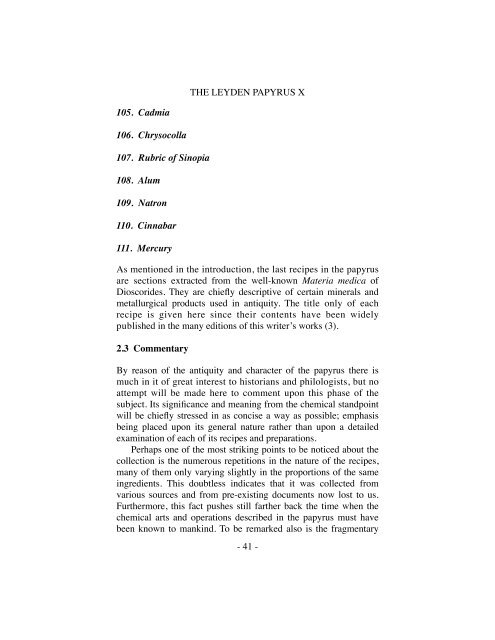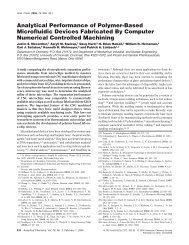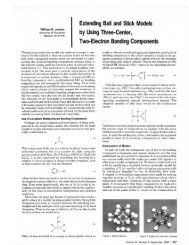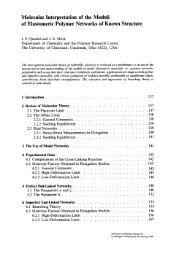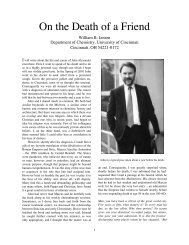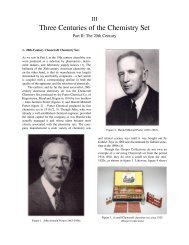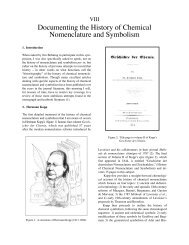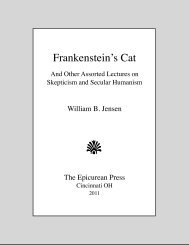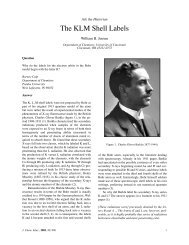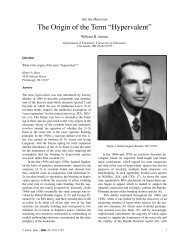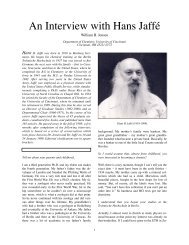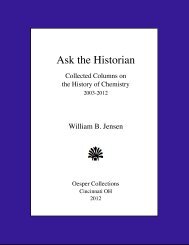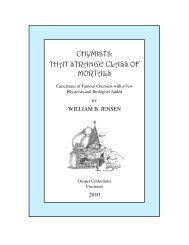The Leyden and Stockholm Papyri - University of Cincinnati
The Leyden and Stockholm Papyri - University of Cincinnati
The Leyden and Stockholm Papyri - University of Cincinnati
Create successful ePaper yourself
Turn your PDF publications into a flip-book with our unique Google optimized e-Paper software.
105. Cadmia<br />
106. Chrysocolla<br />
107. Rubric <strong>of</strong> Sinopia<br />
108. Alum<br />
109. Natron<br />
110. Cinnabar<br />
111. Mercury<br />
As mentioned in the introduction, the last recipes in the papyrus<br />
are sections extracted from the well-known Materia medica <strong>of</strong><br />
Dioscorides. <strong>The</strong>y are chiefly descriptive <strong>of</strong> certain minerals <strong>and</strong><br />
metallurgical products used in antiquity. <strong>The</strong> title only <strong>of</strong> each<br />
recipe is given here since their contents have been widely<br />
published in the many editions <strong>of</strong> this writer’s works (3).<br />
2.3 Commentary<br />
THE LEYDEN PAPYRUS X<br />
By reason <strong>of</strong> the antiquity <strong>and</strong> character <strong>of</strong> the papyrus there is<br />
much in it <strong>of</strong> great interest to historians <strong>and</strong> philologists, but no<br />
attempt will be made here to comment upon this phase <strong>of</strong> the<br />
subject. Its significance <strong>and</strong> meaning from the chemical st<strong>and</strong>point<br />
will be chiefly stressed in as concise a way as possible; emphasis<br />
being placed upon its general nature rather than upon a detailed<br />
examination <strong>of</strong> each <strong>of</strong> its recipes <strong>and</strong> preparations.<br />
! Perhaps one <strong>of</strong> the most striking points to be noticed about the<br />
collection is the numerous repetitions in the nature <strong>of</strong> the recipes,<br />
many <strong>of</strong> them only varying slightly in the proportions <strong>of</strong> the same<br />
ingredients. This doubtless indicates that it was collected from<br />
various sources <strong>and</strong> from pre-existing documents now lost to us.<br />
Furthermore, this fact pushes still farther back the time when the<br />
chemical arts <strong>and</strong> operations described in the papyrus must have<br />
been known to mankind. To be remarked also is the fragmentary<br />
- 41 -


